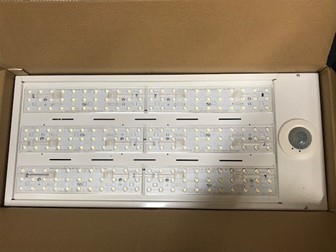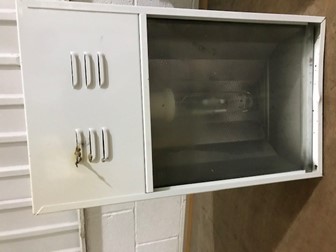Working to identify opportunities to reduce energy consumption, to work in more energy-efficient ways, and to move to renewable energy sources

Reducing On-Site Lighting Energy Consumption
One of Bimeda’s five core sustainability pillars is energy. We have committed to ‘continuously review our working practices, in order to identify opportunities to reduce energy consumption, to work in more energy-efficient ways, and to move to renewable energy sources.’
The Bimeda UK team are making great strides in the area of energy-usage reduction, and recently completed a project to reduce the amount of lighting-related energy which is used in the UK facility. The project was led by Maintenance Technician, Mike Burton. We caught up with Mike to find out more.
Mike, can you tell us a little bit about the background to this project?
As a society we are all becoming increasingly aware of the need to reduce energy consumption and thus reduce emissions. Businesses can play an important role and at Bimeda UK we also wanted to play our part, in line with Bimeda’s sustainability strategy.
What opportunity did you identify, to reduce energy usage?
We wanted to find a way to reduce electric power consumption at the UK site. The existing overhead lighting source was provided by low bay halogen box units. These units are extremely poor in conserving energy. In fact, only 15% of the energy used is converted into light. The remaining 85% is lost as heat.
What solution did you identify?
We identified that LED (light-emitting diode) technology could vastly reduce energy consumption throughout the site, both in our warehouses and offices. Our annual Halogen usage was around 68,640kwh compared with predicted LED usage of 17,160kwh
In total 62 Halogen box units were identified to be replaced with 40 LED low bay units.
What are the benefits of LED lighting?
There are many benefits. Primarily, they require less energy to produce the same amount of light as other technologies. For example, to light a typical incandescent bulb requires 29 watts when halogen technology is used, but only 5 watts when LED technology is employed. The LED lighting system’s lifespan is also 20 times longer than that of conventional lighting.
Was anything else done to reduce energy usage?
Yes, the new LED system has PIR-assist, which is basically motion-sensor technology. This means that lighting is not used when it is not needed, further reducing our energy usage.
How significant was the site’s energy reduction?
It was huge. With Halogen using 440watt consumption compared with LED 165watt, this had led to a 75% reduction in energy consumption for lighting.
The team at Anglesey is pleased to have been able to adapt our practices to adopt more energy-efficient lighting and we will continue to seek new and improved ways of working, which are aligned to Bimeda’s sustainability commitments.
 Halogen Box Unit
Halogen Box Unit





